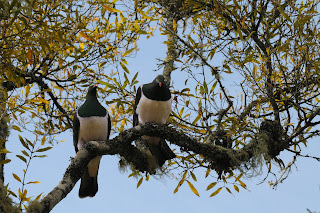 Lord Shiva
Lord Shiva
The God Shiva or Lord Shiva is the other great figure in the modern pantheon. In contrast to the regal attributes of Vishnu, Shiva is a figure of renunciation. A favorite image portrays him as an ascetic, performing meditation alone in the fastness of the Himalayas. There he sits on a tiger skin, clad only in a loincloth, covered with sacred ash that gives his skin a gray color. His trident is stuck into the ground next to him. Around his neck is a snake. From his matted hair, tied in a topknot, the river Ganga (Ganges) descends to the earth. His neck is blue, a reminder of the time he drank the poison that emerged while gods and demons competed to churn the milk ocean. Shiva often appears in this image as an antisocial being, who once burned up Kama, the god of love, with a glance.
But behind this image is the cosmic lord who, through the very power of his meditating consciousness, expands the entire universe and all beings in it. Although he appears to be hard to attain, in reality Shiva is a loving deity who saves those devotees who are wholeheartedly dedicated to him.
The bhakti literature of South India, where Shiva has long been important, describes the numerous instances of pure-hearted devotion to the beautiful lord and the final revelation of himself as Shiva after testing his devotees. Shiva often appears on earth in disguise, perhaps as a wandering Brahman priest, to challenge the charity or belief of a suffering servant, only to appear eventually in his true nature. Many of these divine plays are connected directly with specific people and specific sites, and almost every ancient Shiva temple can claim a famous poem or a famous miracle in its history. The hundreds of medieval temples in Tamil Nadu, almost all dedicated to Shiva, contain sculptured panels depicting the god in a variety of guises: Bhikshatana, the begging lord; Bhairava, a horrible, destructive image; or Nataraja, the lord of the dance, beating a drum that keeps time while he manifests the universe.
Because he withholds his sexual urges and controls them, Shiva is able to transmute sexual energy into creative power, by generating intense heat. It is, in fact, the heat generated from discipline and austerity (tapas ) that is seen as the source for the generative power of all renunciants, and in this sense Shiva is often connected with wandering orders of monks in modern India. For the average worshiper, the sexual power of Shiva is seen in the most common image that represents him, the lingam. This is typically a cylindrical stone several feet tall, with a rounded top, standing in a circular base. On one level, this is the most basic image of divinity, providing a focus for worship with a minimum of artistic embellishment, attempting to represent the infinite. The addition of carved anatomical details on many lingams, however, leaves no doubt for the worshiper that this is an erect male sexual organ, showing the procreative power of God at the origin of all things. The concept of reality as the complex interplay of opposite principles, male and female, thus finds its highest form in the mythology of Shiva and his consort Parvati (also known as Shakti, Kali, or Durga), the daughter of the mountains. This most controlled deity, the meditating Shiva, then has still another form, as the erotic lover of Parvati, embracing her passionately.
Shiva and Parvati have two sons, who have entire cycles of myths and legends and bhakti cults in their own right. One son is called variously Karttikeya (identified with the planet Mars) or Skanda (the god of war or Subrahmanya). He is extremely handsome, carries a spear, and rides a peacock. According to some traditions, he emerged motherless from Shiva when the gods needed a great warrior to conquer an indestructible demon. In southern India, where he is called Murugan, he is a lord of mountain places and a great friend of those who dedicate themselves to him. Some devotees vow to carry on their shoulders specially carved objects of wood for a determined number of weeks, never putting them down during that time. Others may go further, and insert knives or long pins into their bodies for extended periods.
Another son of Shiva and Parvati is Ganesh, or Ganapati, the Lord of the Ganas (the hosts of Shiva), who has a male human's body with four arms and the head of an elephant. One myth claims that he originated directly from Parvati's body and entered into a quarrel with Shiva, who cut off his human head and replaced it later with the head of the first animal he found, which happened to be an elephant. For most worshipers, Ganesh is the first deity invoked during any ceremony because he is the god of wisdom and remover of obstacles. People worship Ganesh when beginning anything, for example, at the start of a trip or the first day of the new school year. He is often pictured next to his mount, the rat, symbol of the ability to get in anywhere. Ganesh is therefore a clever figure, a trickster in many stories, who presents a benevolent and friendly image to those worshipers who placate him. His image is perhaps the most widespread and public in India, visible in streets and transportation terminals everywhere. The antics of Ganesh and Karttikeya and the interactions of Shiva and Parvati have generated a series of entertaining myths of Shiva as a henpecked husband, who would prefer to keep meditating but instead is drawn into family problems, providing a series of morality tales in households throughout India.




 Sunset is the daily disappearance of the sun below the horizon as a result of the Earth's rotation.
Sunset is the daily disappearance of the sun below the horizon as a result of the Earth's rotation.



 W
W




 Shravan Mahina is the tenth month in a traditional Gujarati Calendar.
Shravan Mahina is the tenth month in a traditional Gujarati Calendar. 


 JEWELRY :
JEWELRY : 

















 Ahmedabad Rain 2009 :
Ahmedabad Rain 2009 :



 These are beautiful and clever birds. Both the ancient Egyptians and Romans apparently used pigeons to carry messages. Pigeons kept in captivity can live up to 15-20 years. These birds mate for life and rear their broods together. Taking bird pigeon pictures and photos of other birds is hobby for many people.
These are beautiful and clever birds. Both the ancient Egyptians and Romans apparently used pigeons to carry messages. Pigeons kept in captivity can live up to 15-20 years. These birds mate for life and rear their broods together. Taking bird pigeon pictures and photos of other birds is hobby for many people. F
F



 Eurasian Tree Sparrow (Passer montanus) is a widespread resident in Himalayas and north-east India. Size: 14 cm
Eurasian Tree Sparrow (Passer montanus) is a widespread resident in Himalayas and north-east India. Size: 14 cm